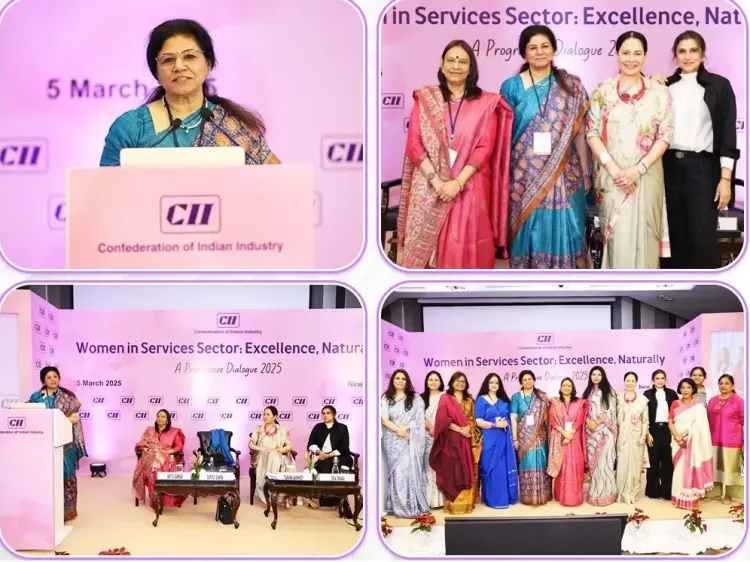Rise in Indian Women's Workforce Participation from 23% to 42% in 6 Years

Synopsis
Key Takeaways
- Women's workforce participation in India has significantly increased.
- The government aims for 70% participation by 2047.
- Importance of mentorship programs for women's leadership roles.
- Women are vital in sectors like STEM and entrepreneurship.
- Challenges such as unequal pay and biases persist.
New Delhi, March 5 (NationPress) The participation rate of women in India's labour force has surged from 23 percent in 2017-18 to around 42 percent in 2023-24, marked by a significant influx of educated women into the job market, as stated by Union Labour and Employment Secretary Sumita Dawra on Wednesday.
During her speech at the Women in Services Sector CII Dialogue 2025, Secretary Dawra underscored the remarkable progress made by women in India's economic sphere, with a growing number securing employment in diverse sectors such as agriculture, manufacturing, and services.
She reaffirmed the government's dedication to achieving the target outlined in the Union Budget 2025-26, which aims for 70 percent of women to participate in economic activities by 2047, in line with the vision of a prosperous India.
Dawra stressed the significance of mentorship programs for preparing women for leadership positions and the necessity of fostering safe, inclusive workplaces. She highlighted the potential of sectors like STEM, entrepreneurship, and startups for increasing women's engagement.
Maharani Shailja Katoch from the royal family of Kangra-Lambagraon (Himachal Pradesh) emphasized the crucial role of women as the backbone of societal change, managing multiple responsibilities while nurturing communities. On the topic of education, she expressed confidence in India's progressive policies, asserting that determined women can achieve success.
She cited examples of girls from Himachal Pradesh excelling across various fields, including civil services and corporate roles. Regarding the preservation of culture in the digital era, she highlighted the need to make heritage appealing to younger generations through modern methods like audiovisual storytelling, social media, and contemporary adaptations.
CII Task Force on Art & Culture Advisor Tarana Sawhney discussed the vital role of women in shaping India's cultural identity. She noted that historically, women have been the unseen architects of our cultural landscape—storytellers, artisans, performers, designers, and curators—whose contributions are finally receiving the recognition they deserve. Notable figures such as Amrita Sher-Gil, whose works continue to sell at record prices, and contemporary artists like Mrinalini Mukherjee, Zarina Hashmi, and Nalini Malani have significantly impacted the international art scene, with exhibitions at esteemed venues including the Yorkshire Sculpture Park and the National Gallery in London.
Within the commercial art sector, women lead premier contemporary art galleries in India, actively engage in global institutions, and mentor emerging artists. Despite these advancements, challenges such as unequal pay, limited institutional support, and sociocultural biases remain. She urged the need to equip women with technological tools and resources to advance their artistic and entrepreneurial pursuits, envisioning a future where gender becomes an afterthought and equal opportunity prevails.
Fashion designer Rina Dhaka highlighted the essential role of women in the fashion sector, significantly contributing across design, production, retail, and entrepreneurship.
She advocated for the establishment of skill-building initiatives and training programs for female tailors, machine operators, and CAD designers to enhance employment prospects and promote fair compensation. She called for collaboration between the government and industry to offer mentorship, tailored policies, and financial backing, particularly for small-scale, women-led enterprises.
She noted the remarkable transformation of India's fashion industry, which has expanded from a few designers to thousands of thriving businesses, reaching even to small towns.









